The dental crown procedure in Vietnamese, known locally as “quy trình làm mão răng,” is a comprehensive process that combines advanced technology with meticulous craftsmanship to restore damaged or decayed teeth. For many patients seeking to improve their oral health and aesthetic appearance, understanding this procedure’s nuances can ease anxiety and foster confidence in their treatment journey. This article delves deeply into each stage of the dental crown procedure in Vietnam, exploring various types of crowns, costs, patient experiences, and the technological innovations shaping contemporary dentistry.
Understanding the dental crown procedure in Vietnamese
The dental crown procedure in Vietnamese is a multi-step process designed to restore both functionality and aesthetics to compromised teeth. Although simple in concept, it involves precise clinical techniques, careful planning, and an appreciation for individual patient needs. The journey begins with a thorough examination, followed by preparation, impression-taking, manufacturing, and finally fitting and placement.
Before diving into the specifics, it’s essential to recognize that each patient’s case is unique, requiring tailored approaches. The success of the procedure hinges on accurate diagnosis, material selection, and execution by skilled practitioners. The following sections outline the typical stages involved, emphasizing technological advancements and patient-centered care.
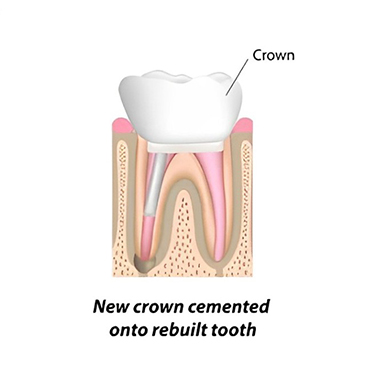
Initial consultation and Oral examination
A successful dental crown procedure starts with a comprehensive oral health assessment. Dentists in Vietnam prioritize understanding the patient’s dental history, current oral condition, and personal aesthetic goals. During this stage:
- Visual inspection of the affected tooth and surrounding tissues.
- X-rays to assess root health and bone integrity.
- Evaluation of bite alignment and jaw joint function.
This initial consultation is crucial because it not only identifies whether a crown is appropriate but also informs the choice of material, shape, and size. Patients often find this transparency reassuring, especially when informed about potential risks and expected outcomes.

Tooth preparation and anesthesia application
Once the diagnosis confirms the need for a crown, the next step involves preparing the tooth. This process requires removing a small amount of the existing tooth structure to create space for the crown, ensuring a natural look and proper fit. Skilled dentists utilize high-precision drills to minimize discomfort and preserve as much healthy tissue as possible.
To maximize patient comfort, local anesthesia—either traditional lidocaine or modern sedation techniques—is administered. Thanks to advances in anesthetic technology, most patients report little to no pain during this phase. The aim is to make the procedure as smooth and stress-free as possible while maintaining precision in tooth shaping.
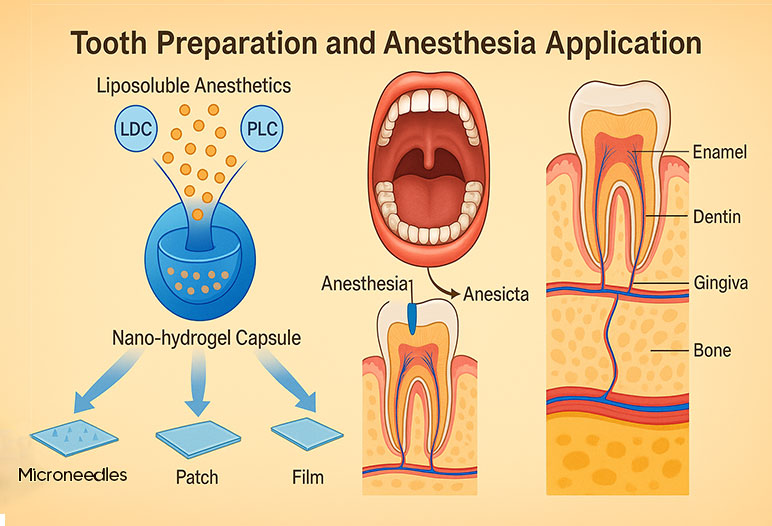
Taking Impressions and modeling
After tooth preparation, impressions are captured to create an exact replica of the prepared tooth and surrounding structures. In Vietnam, clinics increasingly employ digital scanning technology, replacing traditional impression materials. Digital impressions offer numerous benefits:
- Increased accuracy and detail.
- Reduced discomfort caused by impression trays.
- Faster turnaround time for model creation.
These impressions serve as the foundation for designing the custom-made crown. Modern CAD/CAM (Computer-Aided Design and Manufacturing) systems enable technicians to craft highly precise restorations, tailored to each patient’s anatomy.
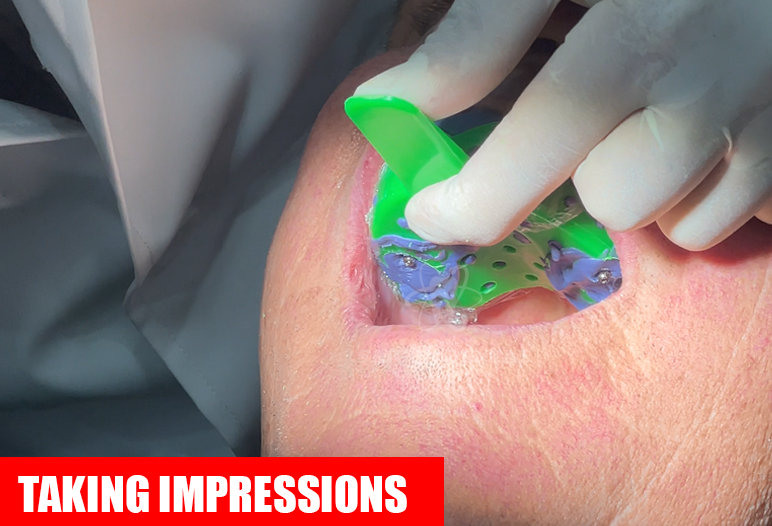
Fabrication of the dental crown
The fabrication phase involves transforming digital designs or physical impressions into tangible crowns. Depending on the clinic’s equipment and patient preferences, crowns may be manufactured using:
- All-ceramic materials: such as zirconia or porcelain, are favored for their natural appearance.
- Metal-based options: such as gold alloys or non-nickel ceramics, are appreciated for durability.
In Vietnam, the trend favors all-ceramic crowns due to aesthetic demands, especially for front teeth. These crowns mimic the translucency and color of natural enamel remarkably well, boosting patient confidence in social interactions.
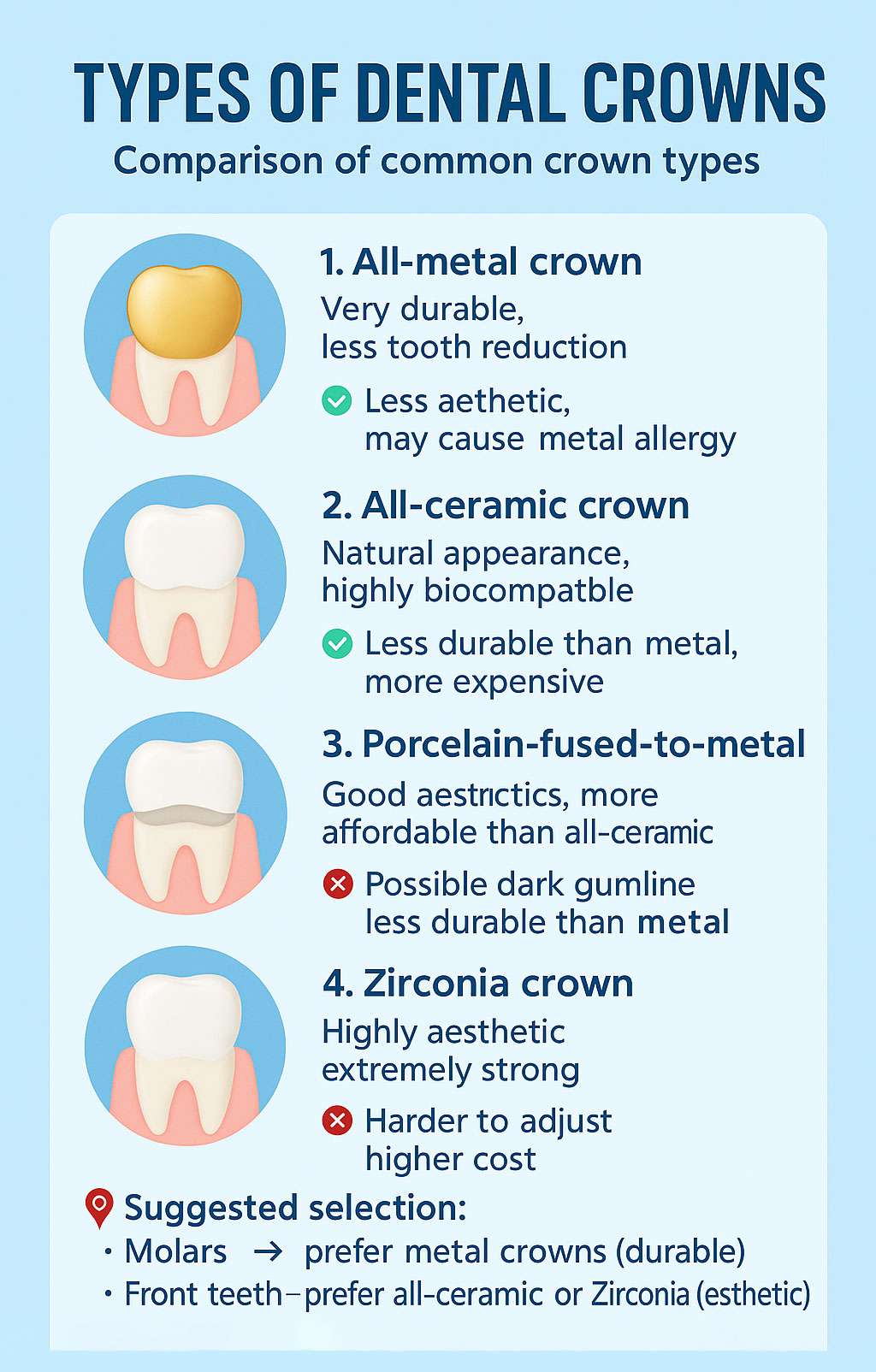
Fitting and cementation
The final stage occurs when the fabricated crown is tried in the patient’s mouth. Dentists check for fit, bite alignment, and aesthetic harmony. Adjustments are meticulously made to ensure comfort and aesthetics. Once satisfied, the crown is permanently cemented using durable adhesive materials.
Patients often experience immediate improvements—restored function and boosted self-esteem—highlighting the importance of quality craftsmanship in each step.
Types of crowns available in Vietnam
When considering a dental crown procedure in Vietnamese, patients must choose among several crown types, each offering distinct advantages based on location, function, aesthetics, and budget. The diversity of options reflects Vietnam’s expanding dental industry, which combines international standards with local expertise.
All-Ceramic Crowns – The aesthetic marvels
All-ceramic crowns, predominantly made of zirconia or porcelain, are renowned for their lifelike appearance. They are especially suitable for visible front teeth where aesthetics matter most. Their ability to reflect light similarly to natural enamel makes them popular among young professionals and those seeking cosmetic enhancements.
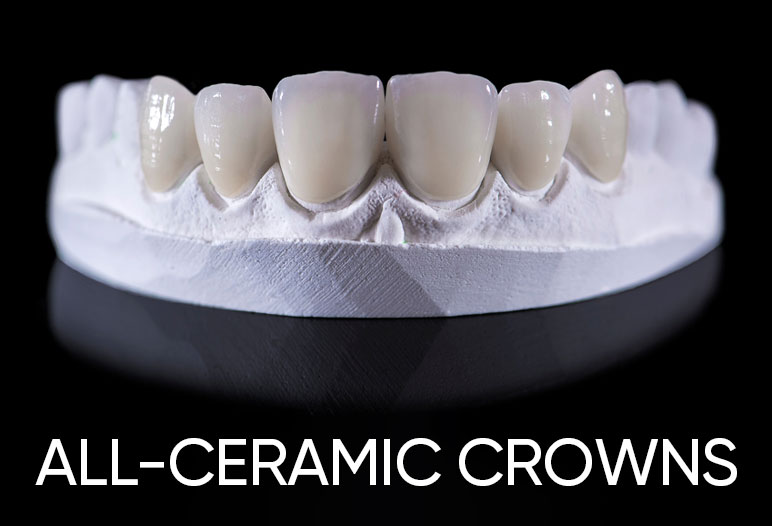
Advantages
- Exceptional translucency mimicking real teeth.
- No metal components, reducing the risk of allergic reactions.
- Suitable for patients with metal allergies.
Limitations
- Slightly less durable than metal-based crowns, especially in high-stress areas.
- Higher cost due to advanced manufacturing processes.
Metal Crowns – The Durable Workhorses
Metal crowns, such as those made from gold alloys or other durable metals, are prized for their longevity and strength. They are ideal for molars or back teeth where biting forces are substantial.
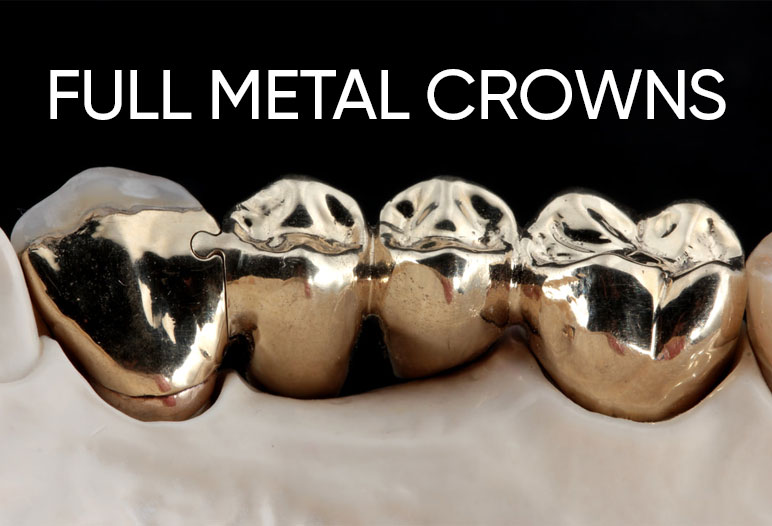
Advantages
- Superior strength and durability.
- Less prone to chipping or cracking.
- Usually more affordable than all-ceramic options.
Limitations
- Metallic appearance is unsuitable for visible teeth.
- May cause aesthetic concerns, especially in the anterior region.
Zirconia and Porcelain-Fused-to-Metal (PFM) Crowns
Combining strength with aesthetics, zirconia crowns provide a compromise between all-ceramics and metal options. PFM crowns feature a metal core coated with porcelain, offering durability while maintaining a natural look.
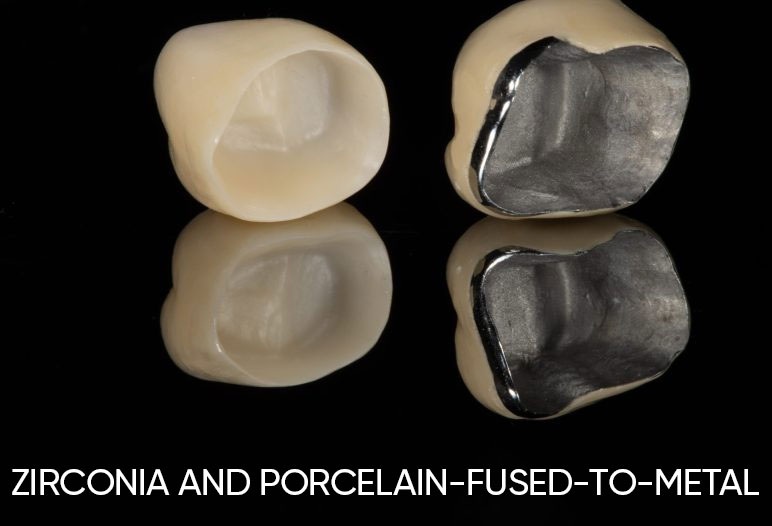
Advantages
- Good balance of strength and aesthetics.
- Suitable for both front and back teeth.
- Widely available in Vietnam.
Limitations
- Potential for porcelain chipping over time.
- Slightly opaque compared to natural teeth.
Customizing Material Choice Based on Patient Needs
Selecting the right crown involves considering multiple factors, including:
- Location of the tooth (front vs. back).
- Chewing forces.
- Aesthetic expectations.
- Budget constraints.
In Vietnam, dental clinics often consult closely with patients, presenting tailored recommendations to ensure the best outcome aligned with individual circumstances.
Cost and duration of the dental crown procedure in Vietnam
Understanding the financial investment and timeline is vital for anyone considering a dental crown procedure in Vietnamese. While costs vary depending on material, clinic reputation, and technology used, transparency and efficiency are hallmarks of Vietnam’s dental industry.
Economic factors influencing costs
Vietnam offers competitive pricing compared to many Western countries, making it an attractive destination for dental tourism and local residents alike. The typical cost range for a single crown generally starts at around 100 USD, but premium materials or advanced technologies can increase expenses.
Factors Affecting Cost
- Material type (ceramic, zirconia, metal).
- Complexity of the case.
- Clinic’s location (urban centers tend to be more expensive).
- Additional procedures, such as root canal treatments or gum therapy.
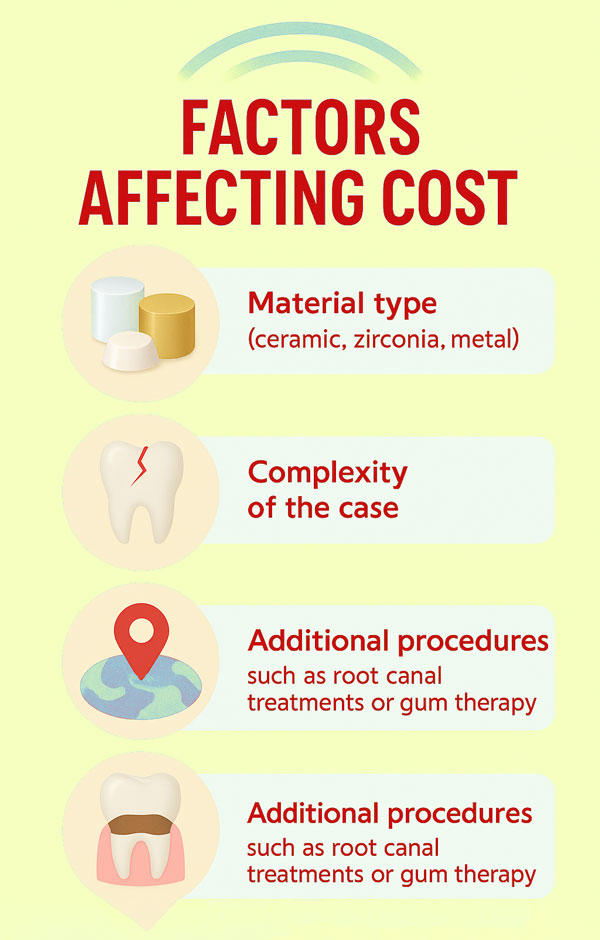
Timeline for completing the procedure
The entire process usually spans from two to three weeks, involving multiple visits:
- Initial consultation and tooth preparation.
- Impression-taking and model creation.
- Temporary crown placement.
- Final crown fabrication and fitting.
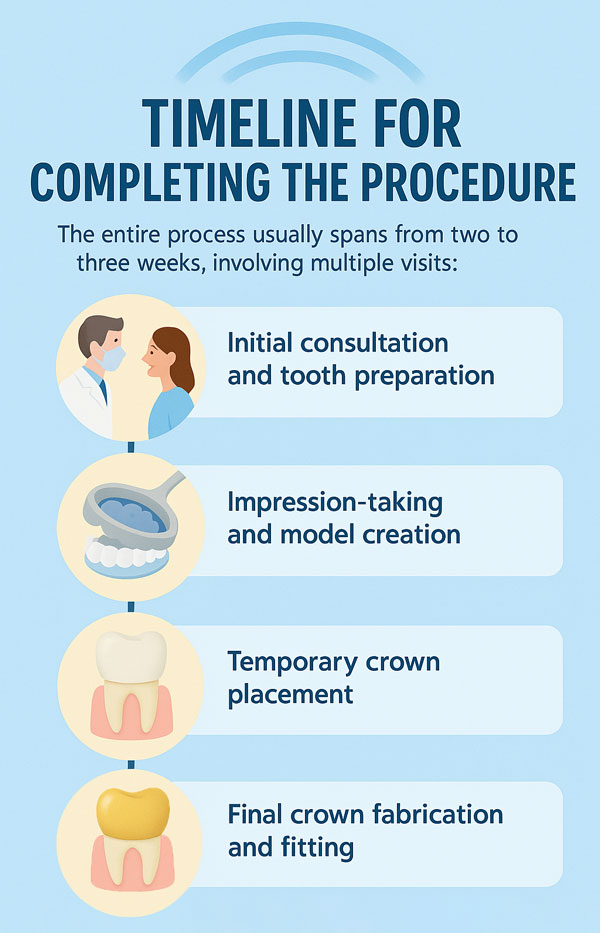
However, some clinics now offer expedited services with same-day crowns, utilizing on-site CAD/CAM milling machines. Such innovations dramatically reduce the inconvenience for busy patients or those traveling from afar.
Patient experience and satisfaction
Most Vietnamese patients find the process efficient, especially with modern technology that shortens waiting periods. The combination of professionalism and affordable pricing results in high satisfaction levels, with many reporting improved confidence and oral function post-treatment.
| Crown Material | Approximate Cost (USD) | Typical Duration |
|---|---|---|
| All-ceramic (zirconia) | 150 – 300 | 2-3 weeks |
| Metal-based (gold, alloy) | 100 – 250 | 2-3 weeks |
| PFM (porcelain fused to metal) | 120 – 280 | 2-3 weeks |
Here is our dental crowns cost at Saigon Center Dental Clinic you can check it out:
| CERAMIC CROWNS / VENEERS | DENTAL COST (USD) | DISCOUNT PRICE (USD) |
| Precious metal porcelain crowns | Contact us for a quote | |
| Full zirconia crown (Korea) | 320 | 240 |
| Full ceramic Cercon HT (Germany) | 360 | 280 |
| Full ceramic Lava Plus 3M (USA) | 400 | 320 |
| Full ceramic Narcera (Germany) | 520 | 400 |
| Full ceramic Orodent (Italy) | 600 | 480 |
| Full ceramic Diamond (Germany) | 720 | 600 |
| Veneer Emax | 400 | 320 |
| Veneer Emax Press | 600 | 480 |
| Inlay/Onlay Emax | 320 | 240 |
| SAIGON CENTER DENTAL CLINIC offers a bonus combo valued up to 400 for clients who decide to have 20 or more porcelain teeth | ||
Patient perspectives and technological advances in Vietnam’s dental crown procedures
Patient testimonials reveal a broad spectrum of experiences, influenced by technological advancements, practitioner skill, and individual expectations. Many appreciate the blend of affordability and quality care, noting that innovations like digital imaging, CAD/CAM crafting, and biocompatible materials have transformed their treatment journeys.
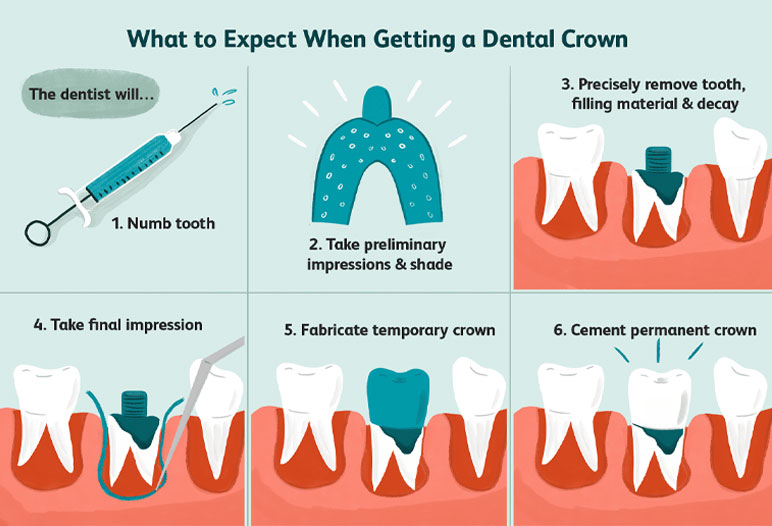
Common patient experiences
- Anxiety reduction due to improved anesthetic techniques.
- Enhanced aesthetic outcomes thanks to modern ceramic materials.
- Faster turnaround times with intraoral scanners and on-site milling.
Patients emphasize the importance of choosing reputable clinics with experienced dentists who prioritize personalized care. The integration of cutting-edge technology has elevated the country’s status as a regional hub for dental excellence, attracting international clients seeking top-tier results at reasonable prices.
The role of technology in improving outcomes
Vietnamese clinics leveraging digital dentistry provide several benefits:
- Precise fit and function of crowns.
- Reduced number of visits through same-day solutions.
- Better patient education via virtual simulations.
Furthermore, ongoing training and international collaborations ensure practitioners stay abreast of global standards, delivering consistent, high-quality results.
Creative insights and future directions
As Vietnam continues to innovate within dental medicine, future prospects include:
- Incorporation of 3D printing for even faster crown production.
- Use of biocompatible, eco-friendly materials.
- Integration of artificial intelligence in treatment planning.
Such developments promise even more personalized, durable, and aesthetically pleasing restorative options for patients, solidifying Vietnam’s reputation as a leader in modern dental care.
Conclusion
The dental crown procedure in Vietnamese exemplifies how combining technological advancements with skilled craftsmanship can deliver exceptional results in restoring oral health and enhancing smiles. From initial consultations through material choices to final fitting, each step is carefully executed to meet patient needs. With diverse options ranging from highly aesthetic ceramics to durable metals, coupled with cost-effective pricing and rapid turnaround times, Vietnam’s dental industry offers a compelling choice for those seeking quality restorative care. Embracing innovation and patient-centric approaches, Vietnam continues to elevate its reputation in global dental tourism and domestic dentistry, ensuring that every smile restored tells a story of precision, beauty, and confidence.


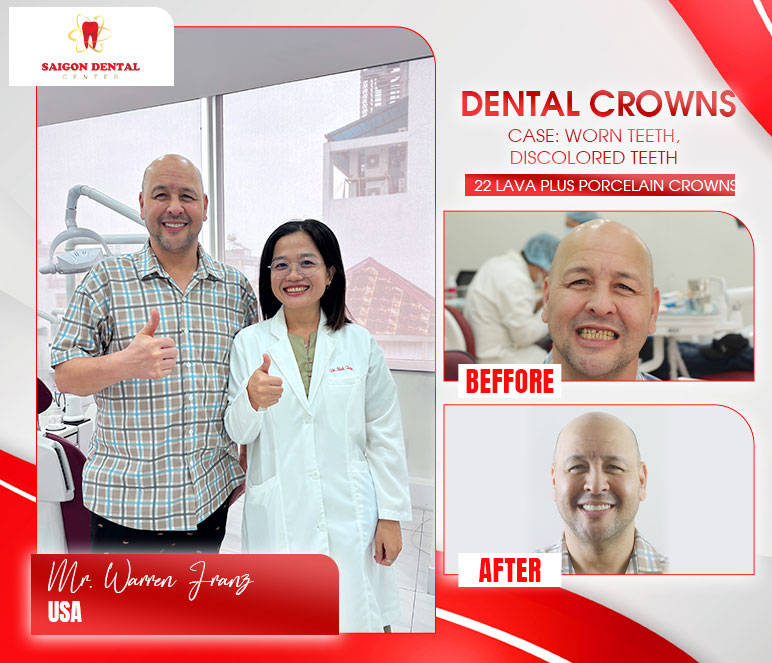
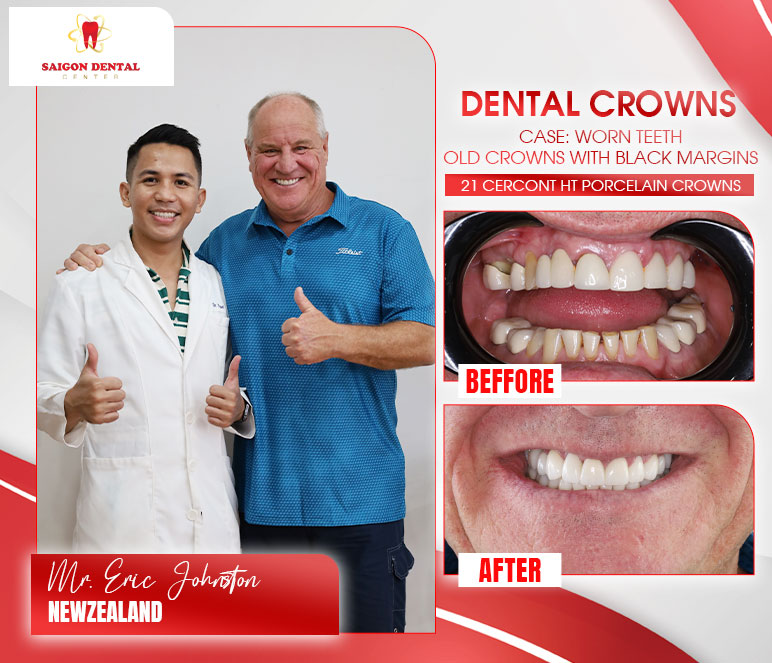
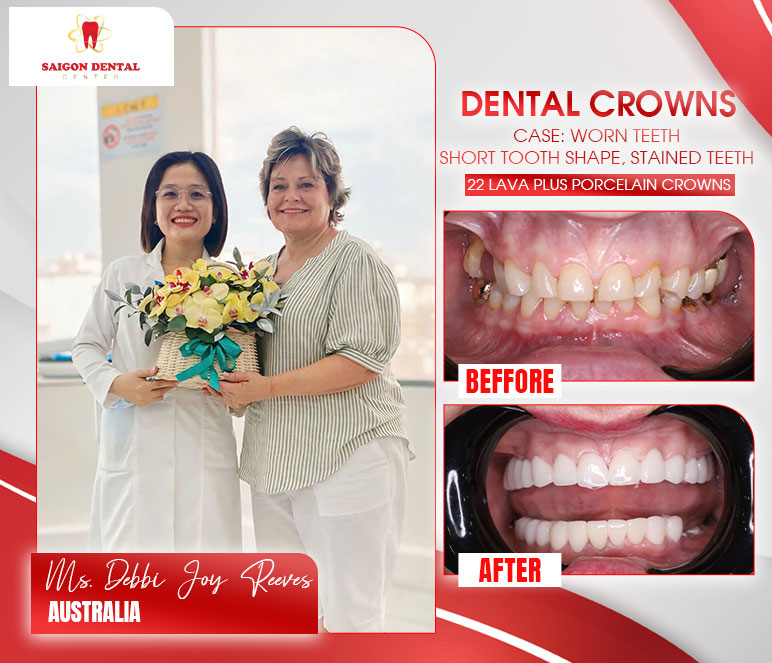
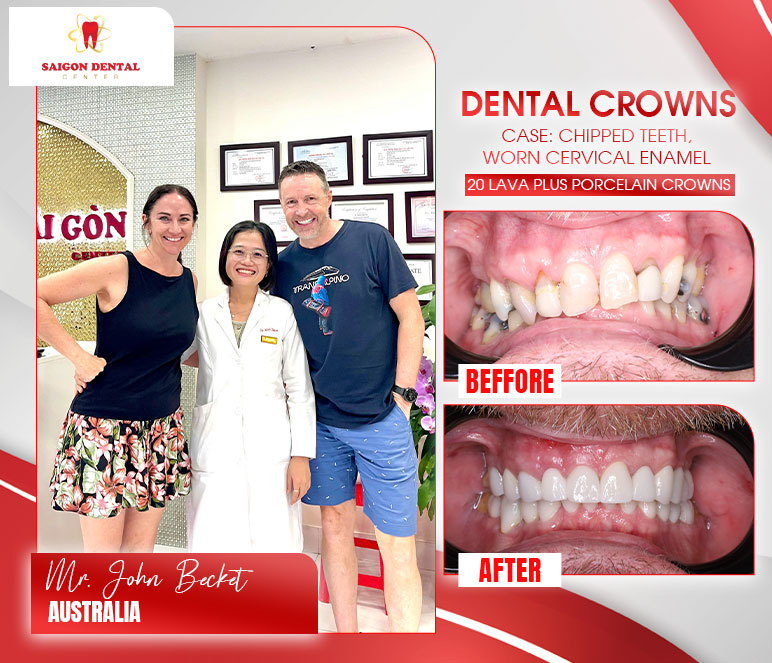
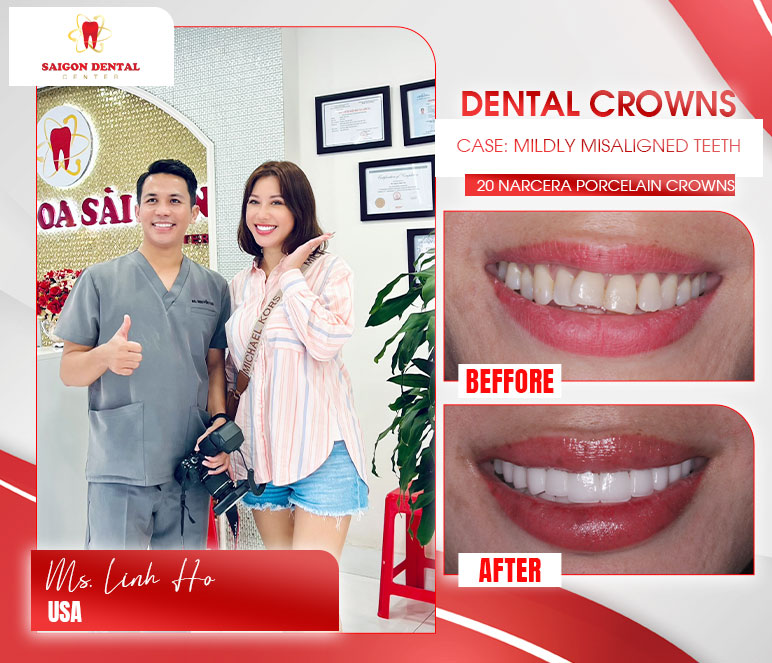
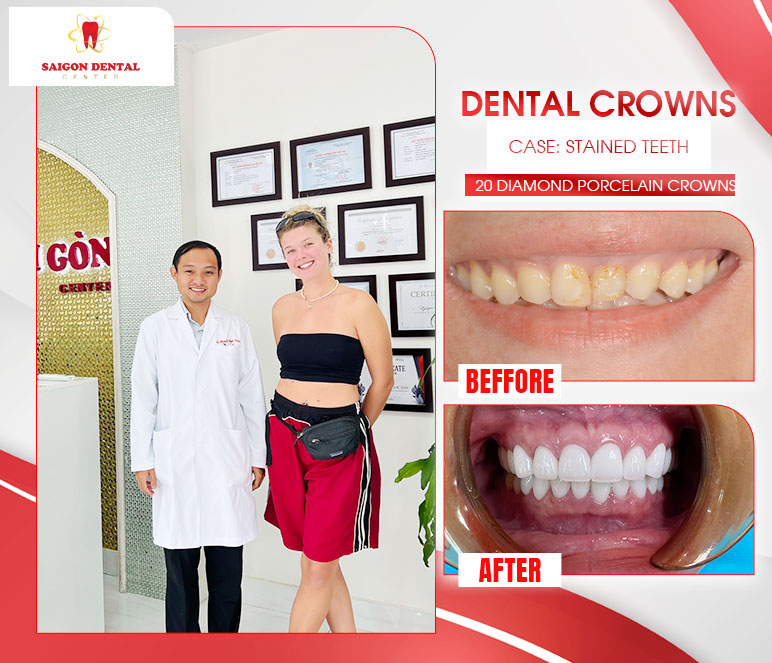
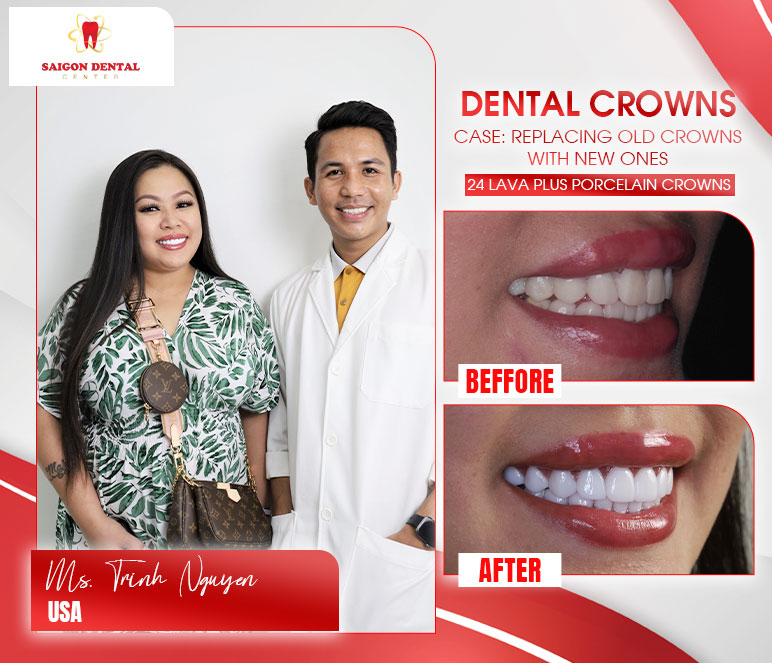

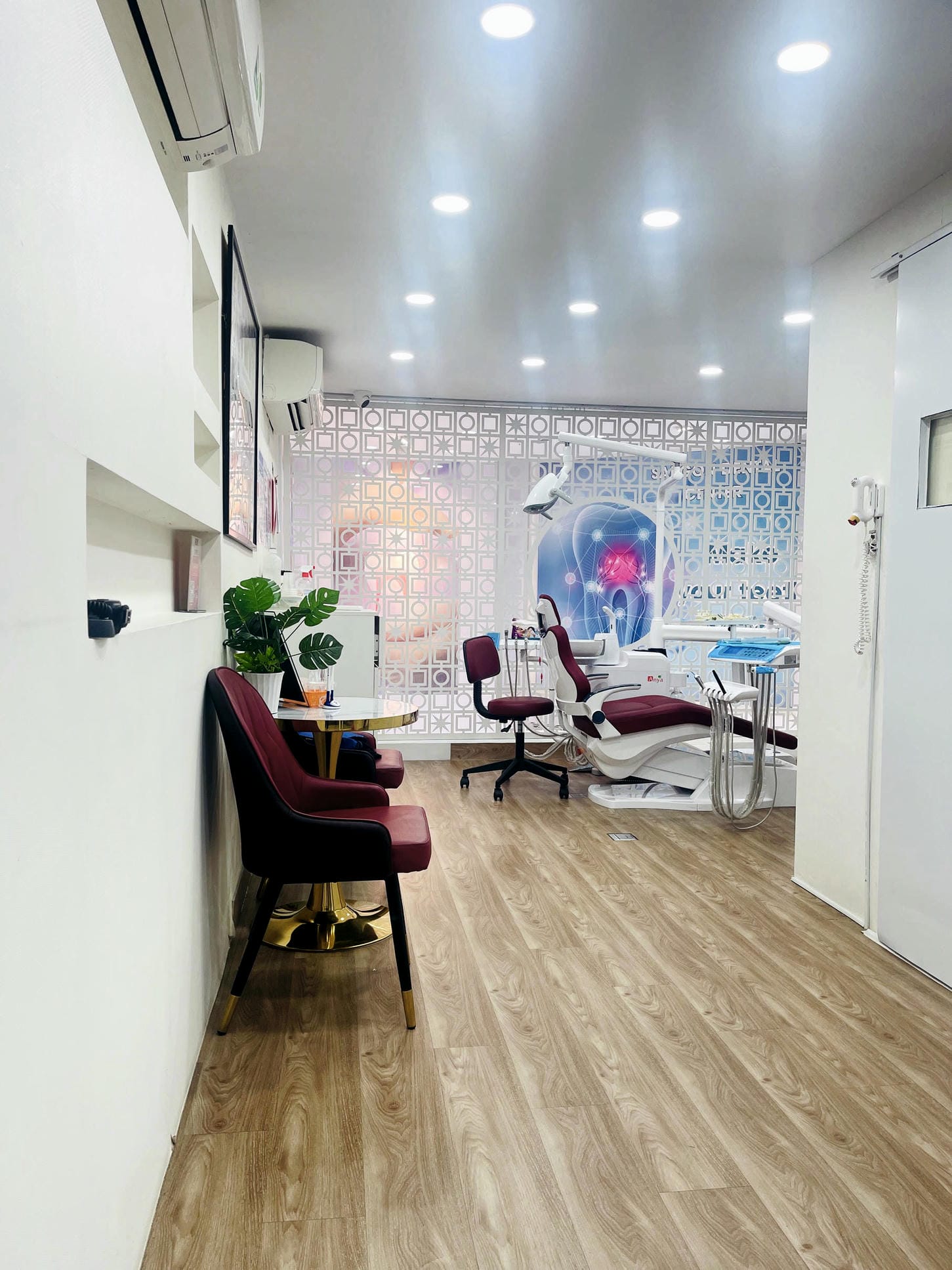
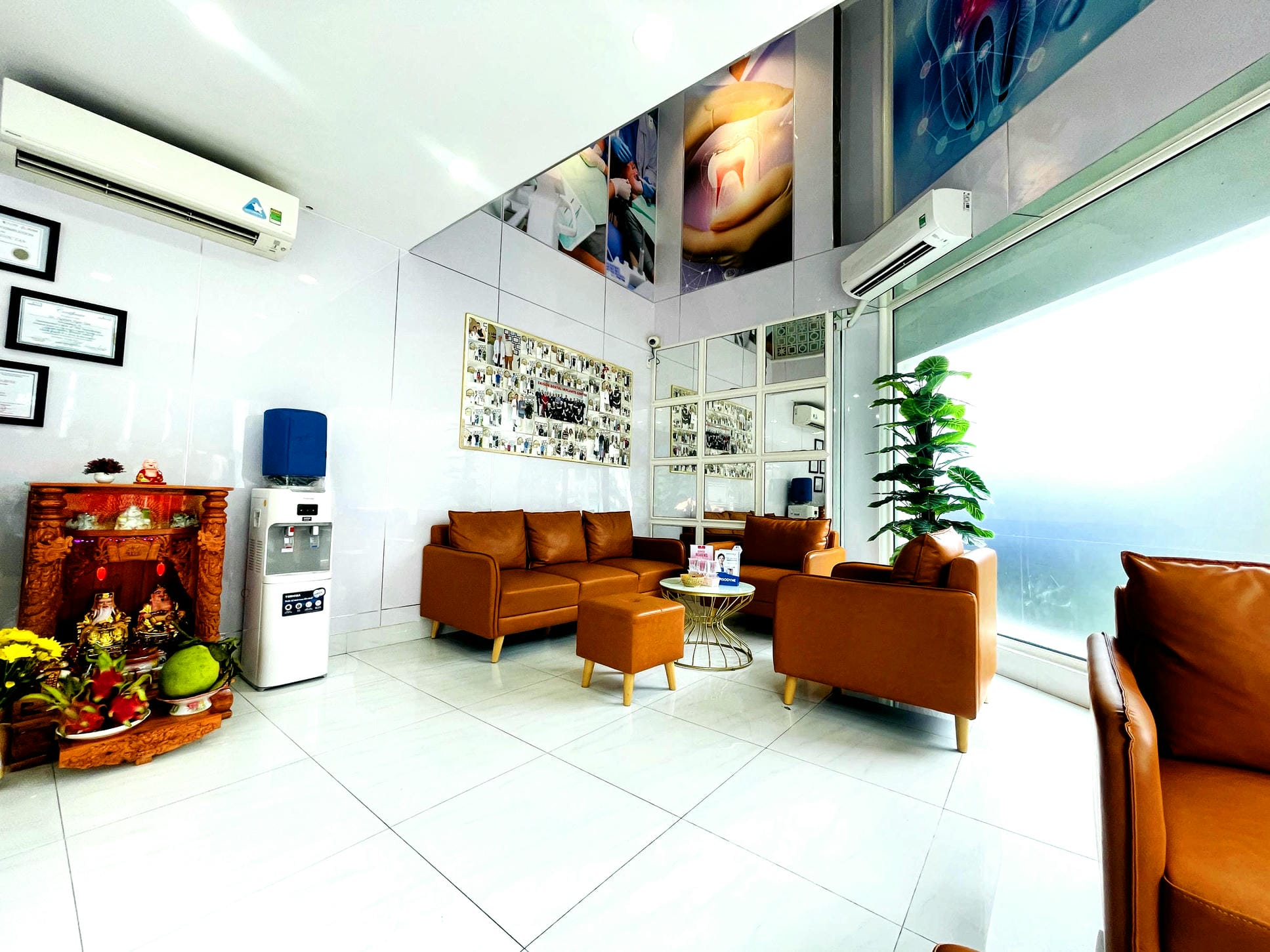
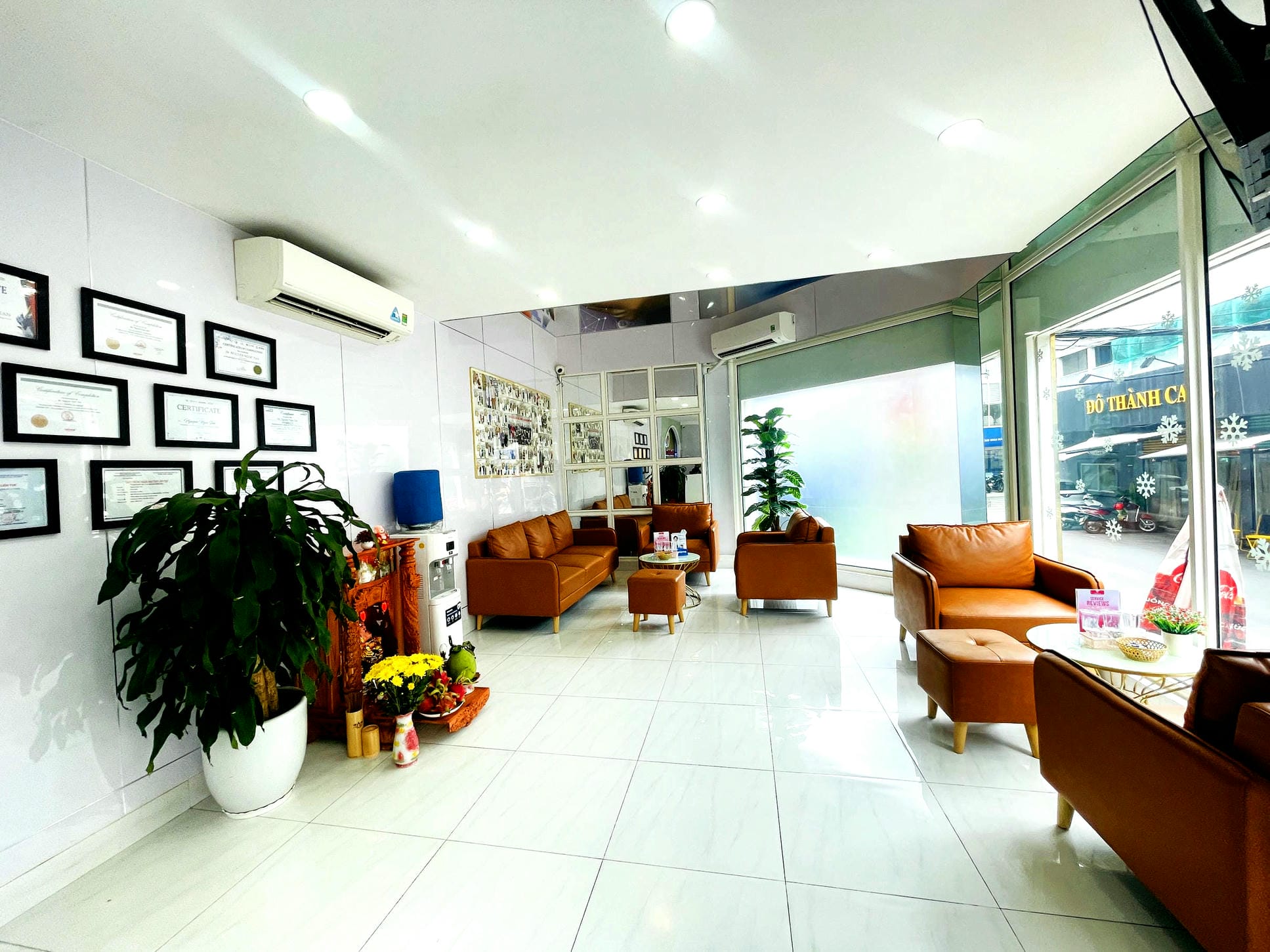
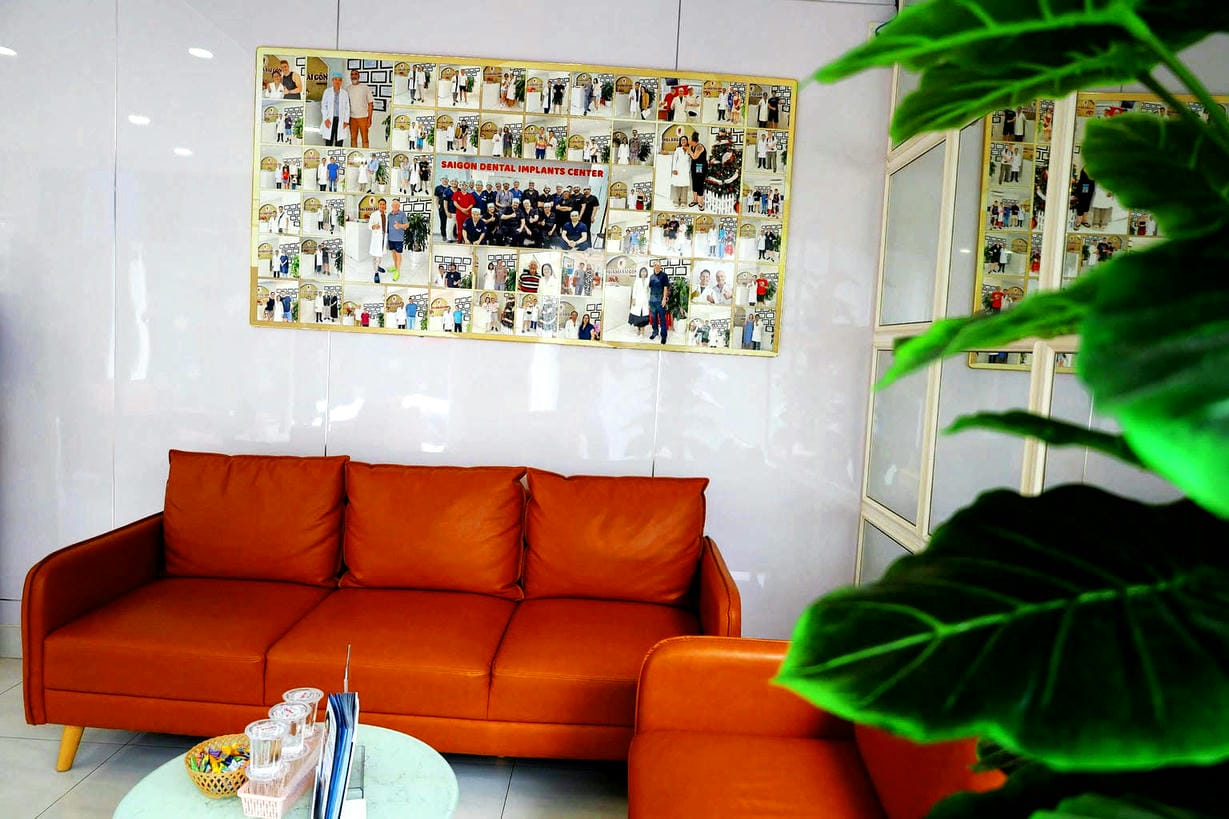
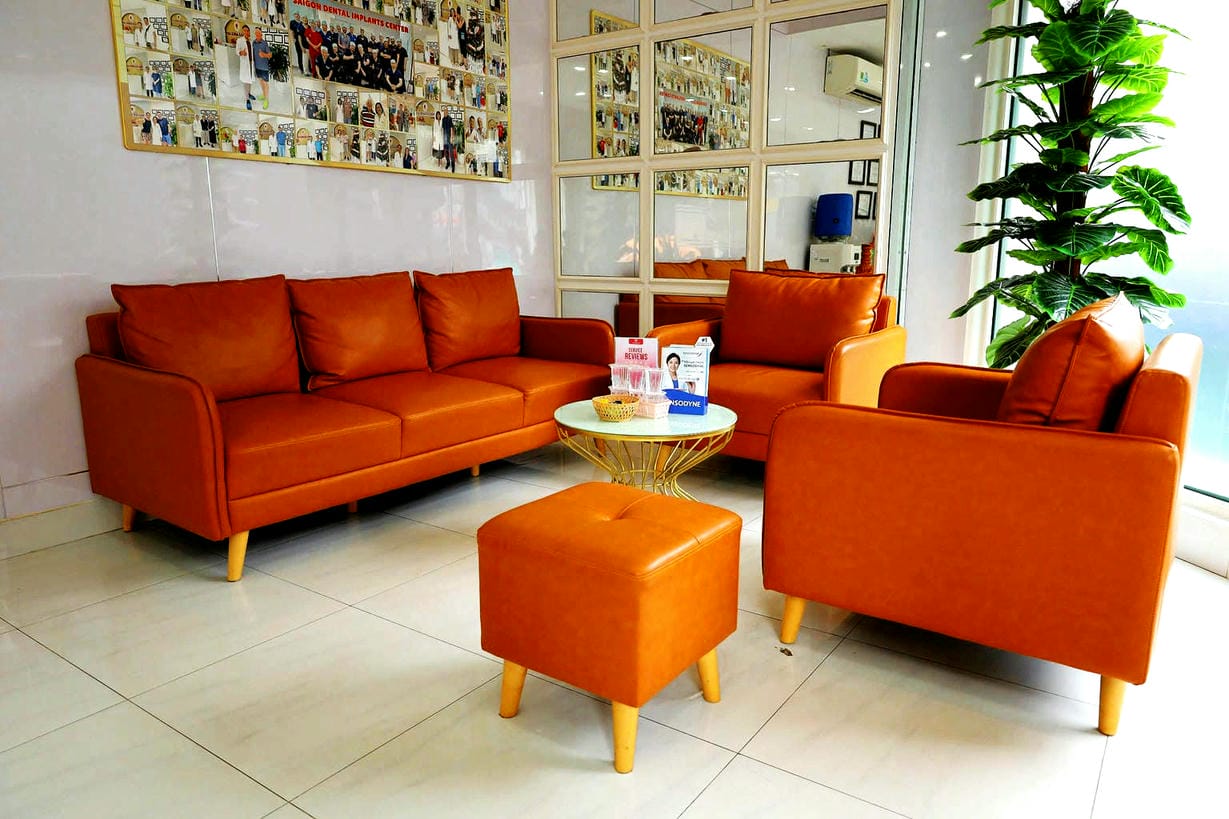
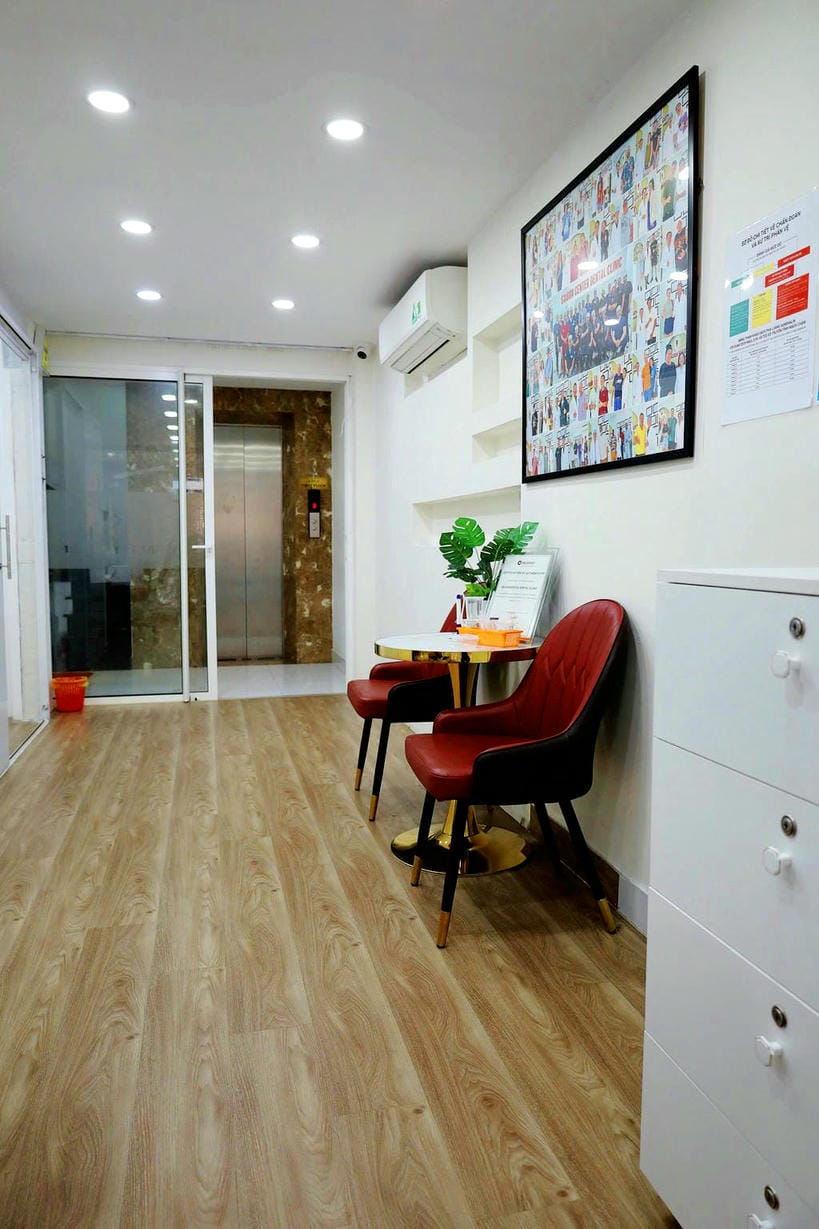
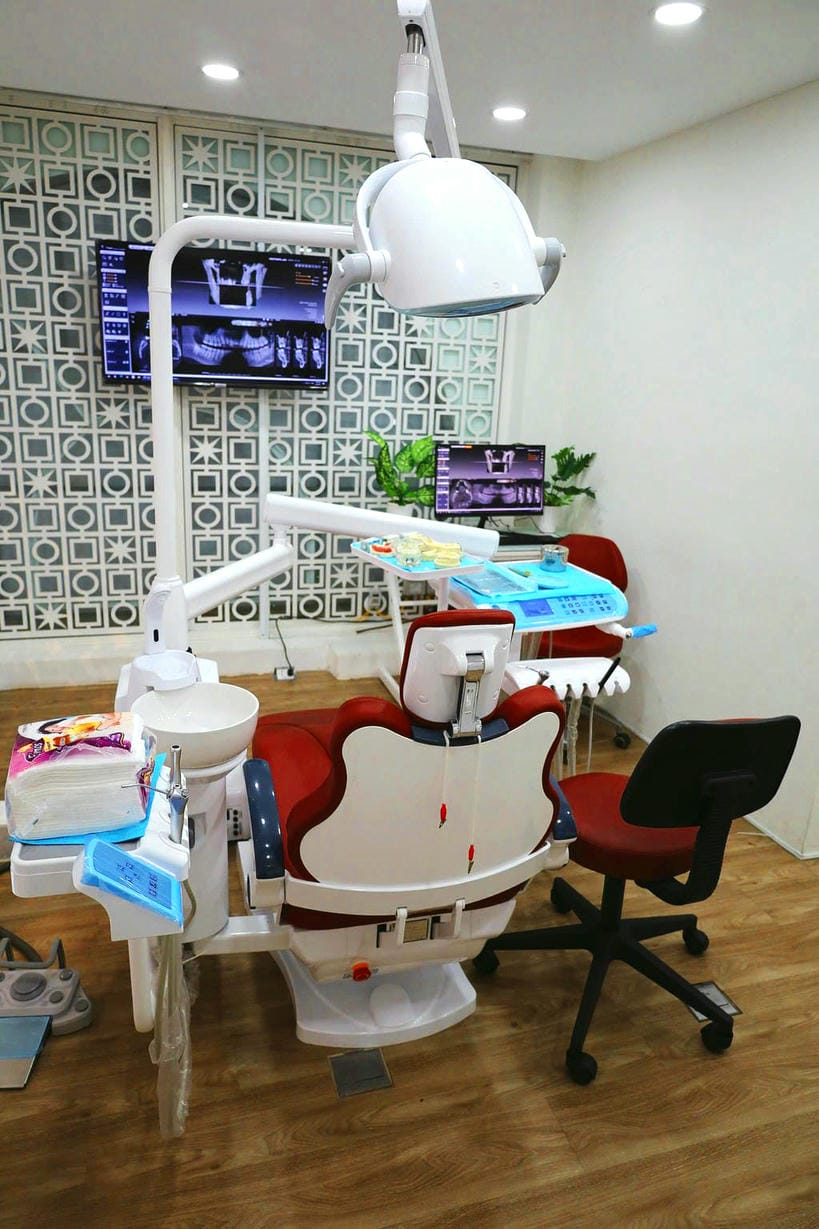
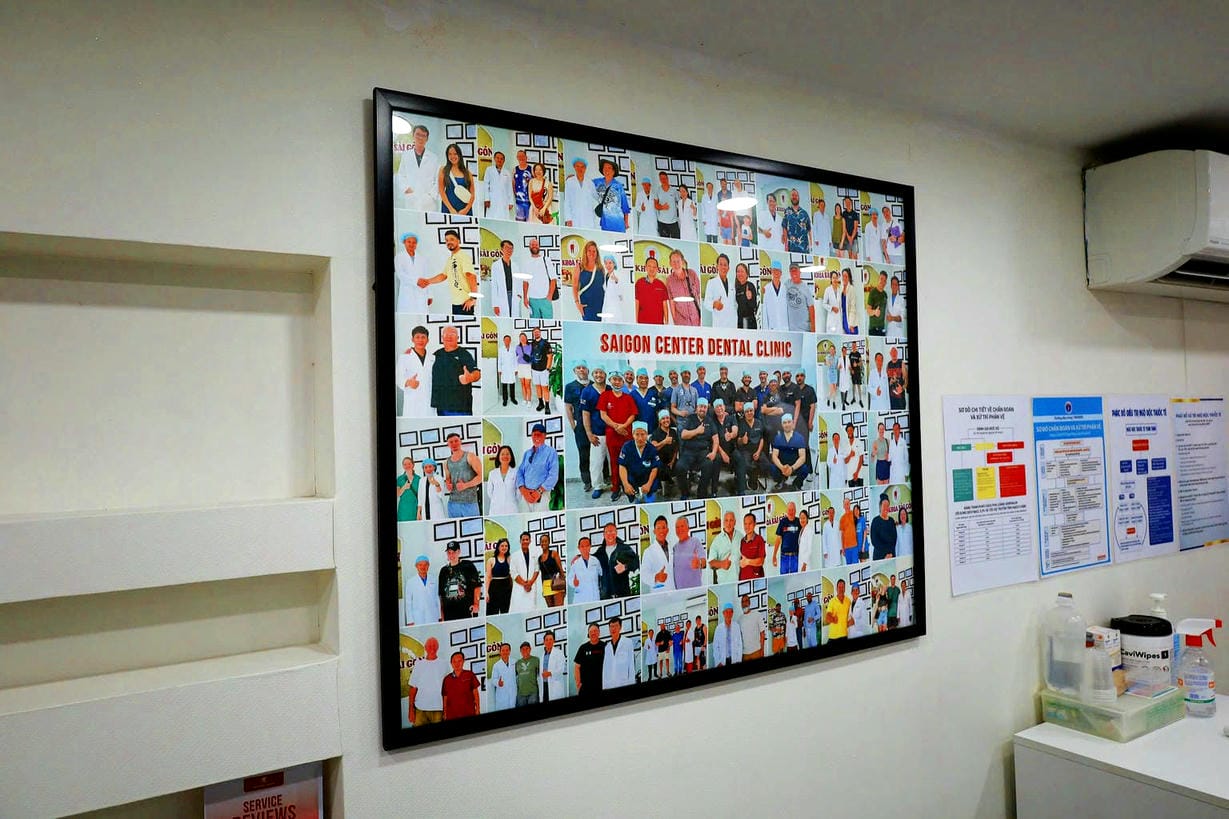
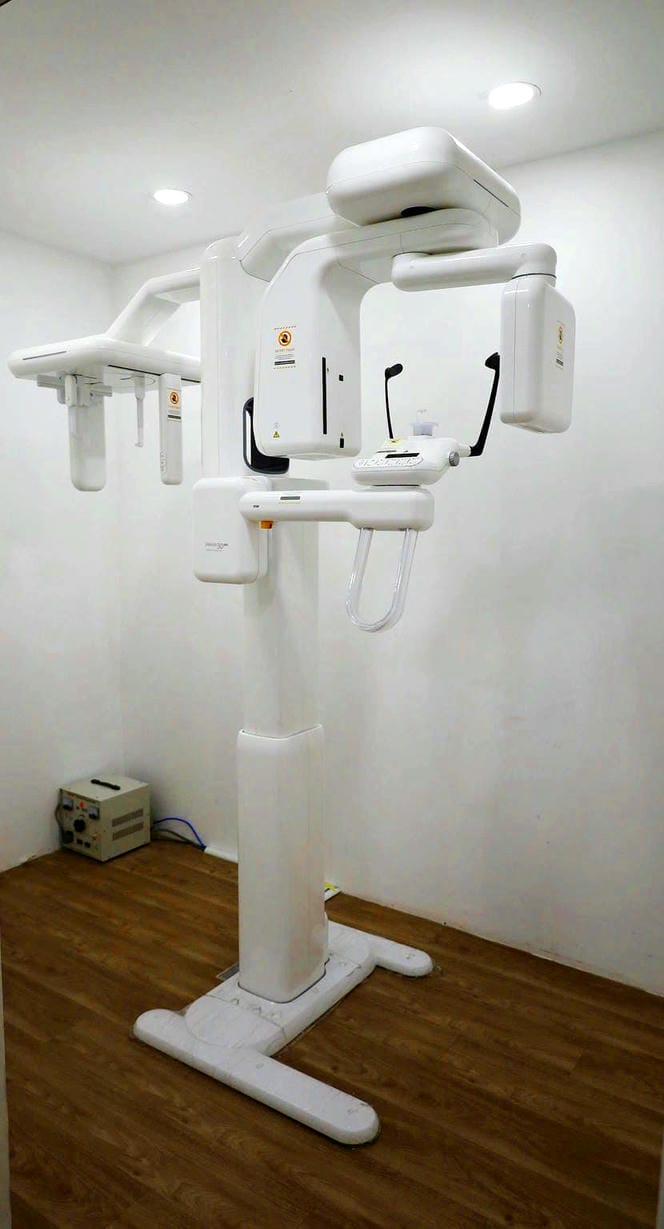
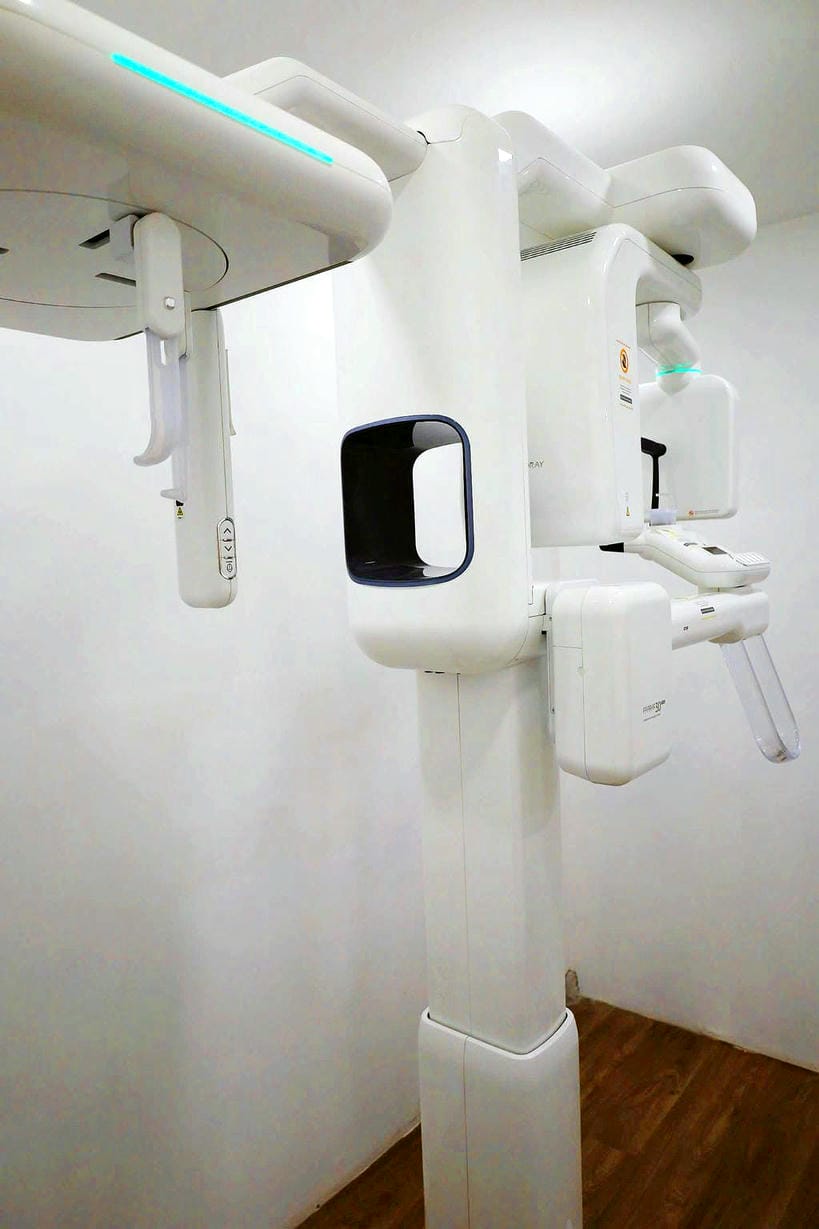
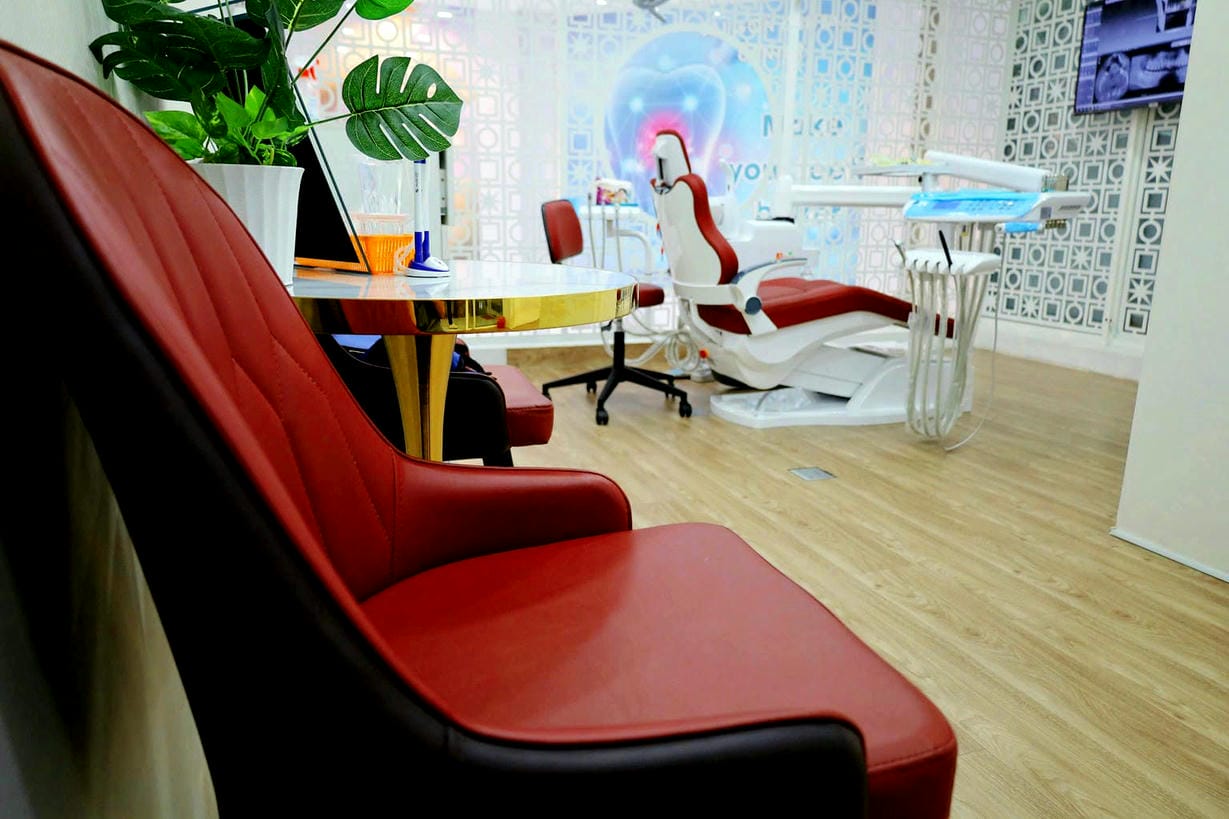
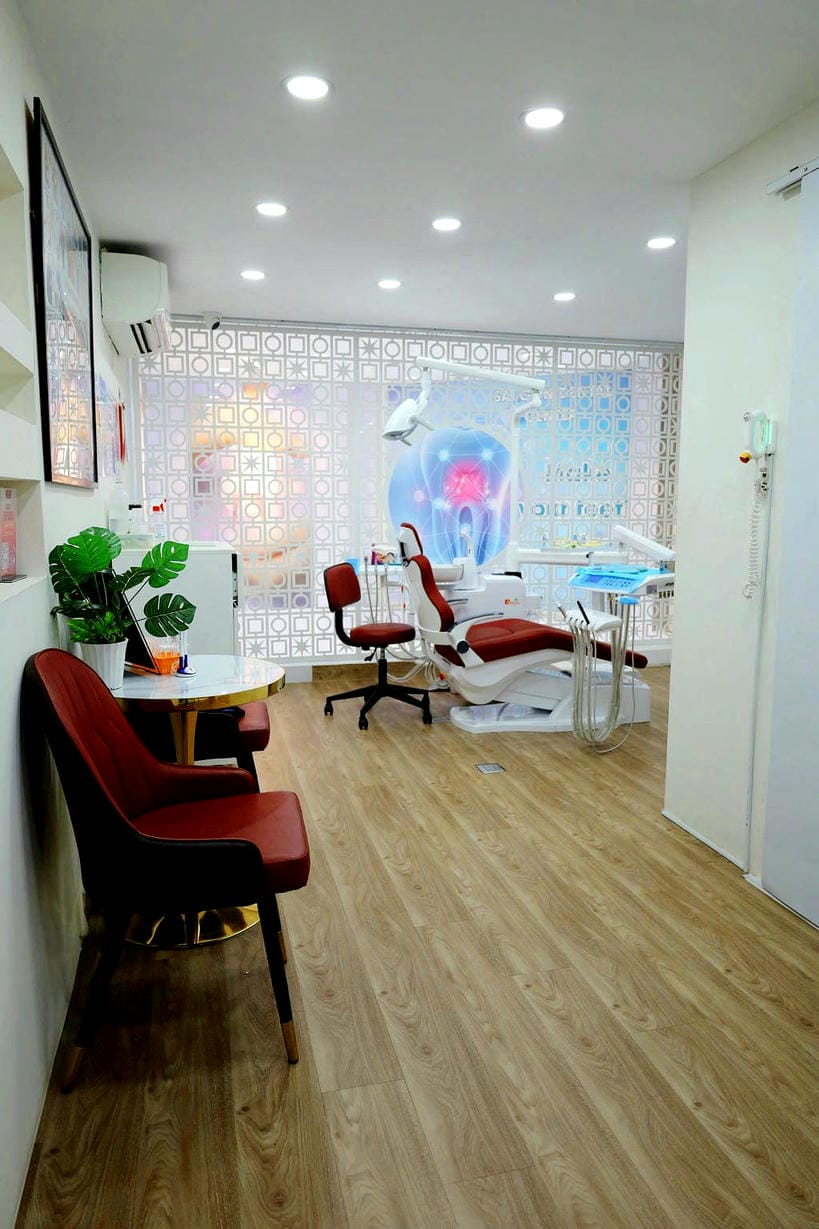
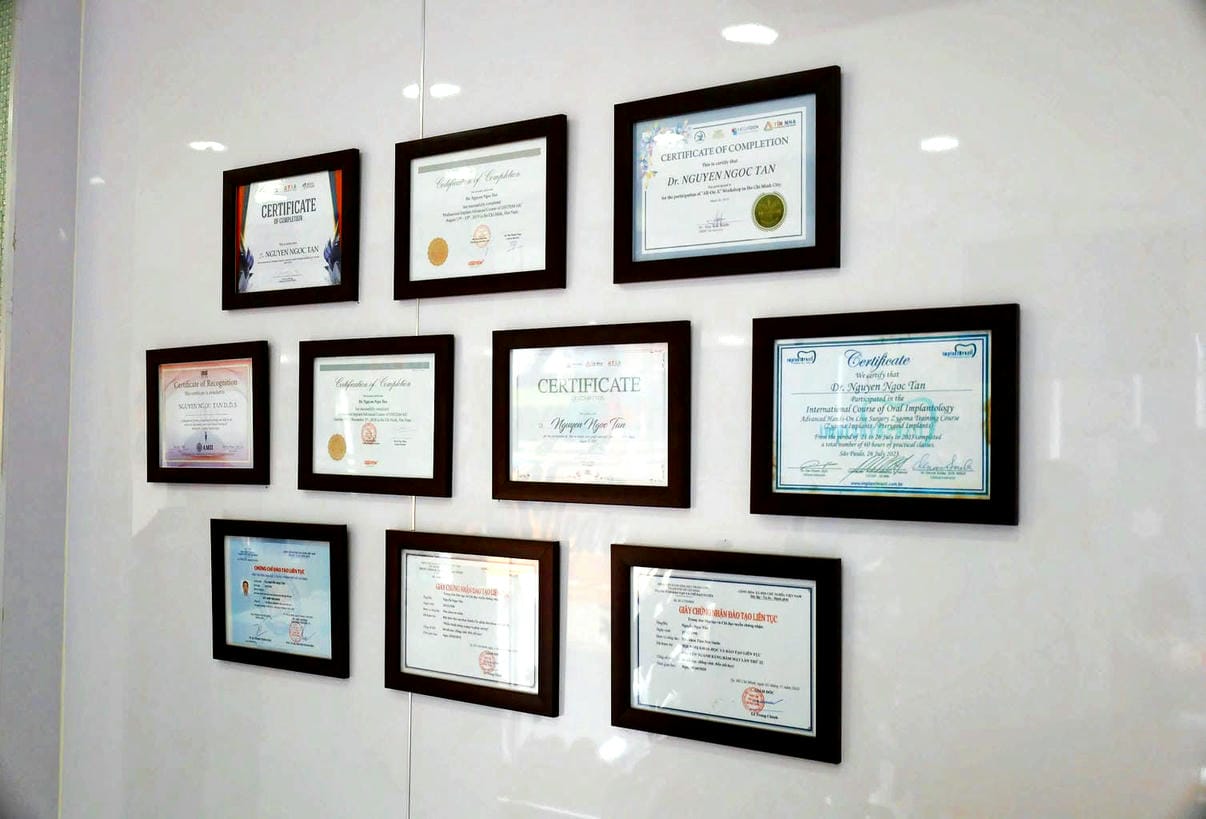
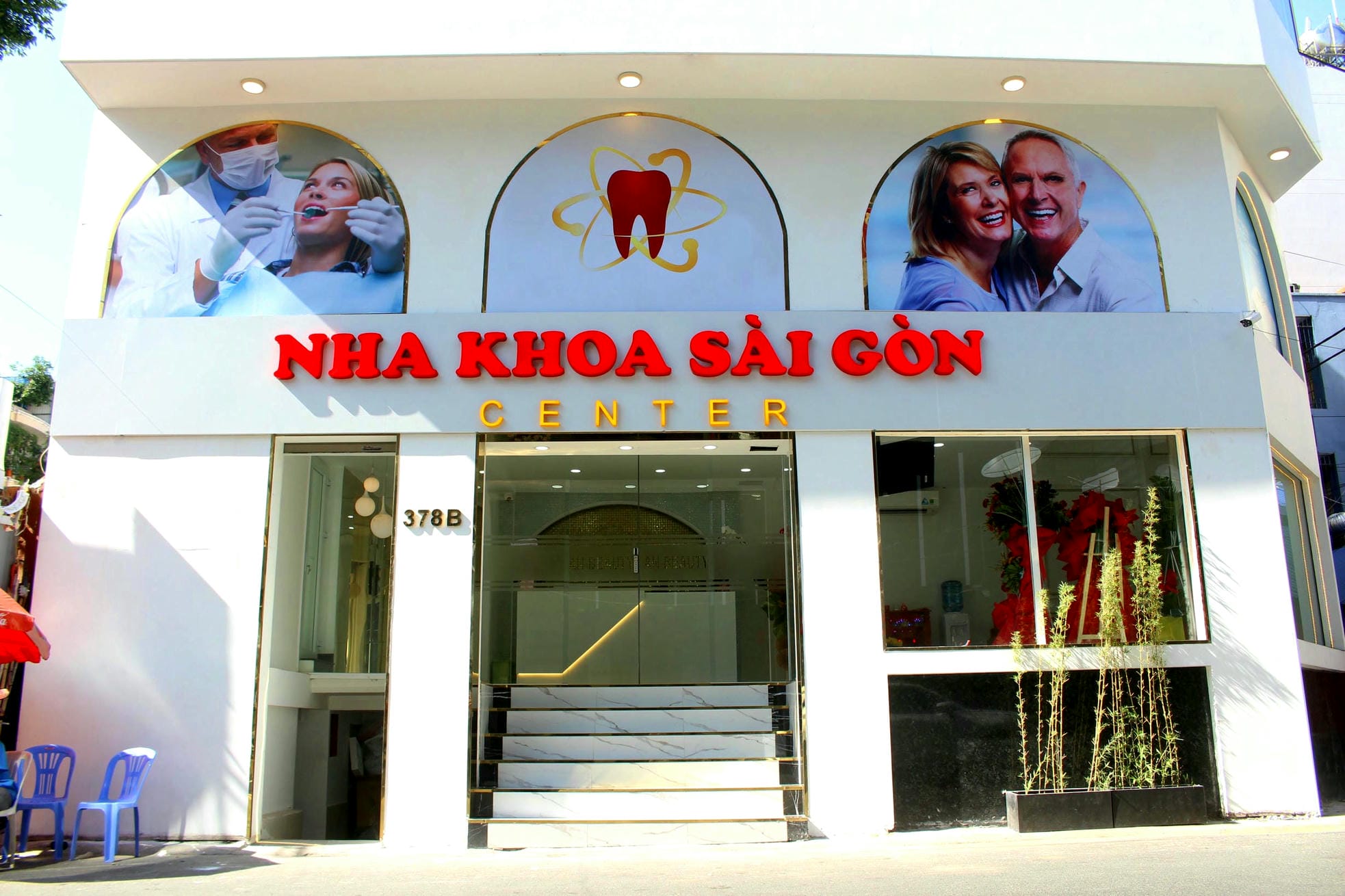


SAIGON CENTER DENTAL CLINIC
Best dentist in Vietnam
Saigon Center Dental Clinic is proud to be one of the most prestigious dental clinics in Ho Chi Minh City with a variety of services: Single dental implant, Full jaw dental implant (especially All On 4, All on 6, and Zygoma Implant), Cosmetic porcelain crowns, Porcelain veneers, Braces, Clear braces, Tooth fillings, Wisdom tooth extraction, Treatment of toothache...
SAIGON DENTAL IMPLANTS CENTER
Best dentist in Vietnam
Saigon Implant Center - Dental Clinic utilizes the latest technology for specialized treatment in the field of Single implant, full jaw implants, All on 4 implants, All on 6 implants, Zygoma implant....